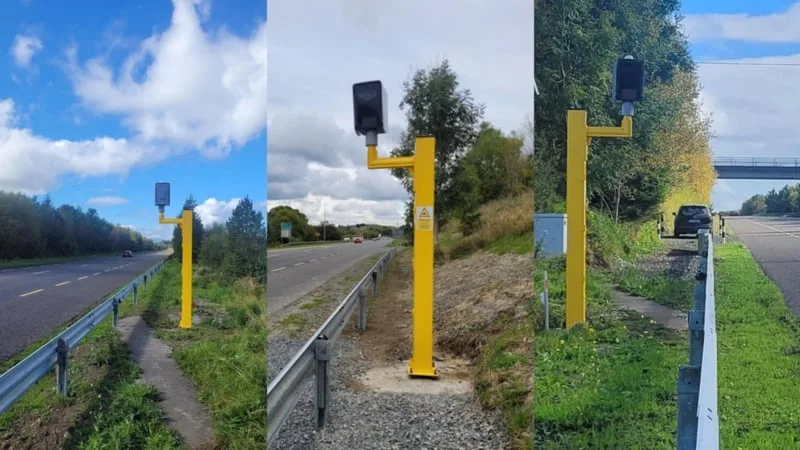Gardaí have initiated the testing of average speed cameras in Counties Cavan and Mayo as part of an expanded nationwide effort to reduce traffic fatalities. This initiative is part of the planned introduction of three average speed cameras and nine static speed safety cameras throughout Ireland this year. The chosen sites have been flagged as high-risk collision zones where incidents have frequently involved serious injuries or fatalities.
Average Speed Camera Locations and Mechanism The new average speed cameras have been installed on the N3 between Kilduff and Billis in Cavan, and on the N5 between Lislackagh and Cuilmore, Swinford, in Mayo. Another camera is set to be installed on the N2 at Slane in County Meath. These locations were selected based on their history of frequent accidents, including fatal and severe incidents, emphasizing the urgent need to enhance driver compliance with speed limits.
Average speed cameras operate by measuring the time it takes for vehicles to travel between two fixed points, ensuring compliance with speed limits. Offenders exceeding the set limits will receive Fixed Charge Notices.
Positive Outcomes from Current Average Speed Systems The existing average speed cameras in the Dublin Port Tunnel and the M7 motorway (between Junctions 26 and 27) have already proven to be effective in reducing speeding, suggesting that the expansion of these systems could replicate similar positive outcomes in other areas.
Static Speed Cameras Nationwide In addition to the average speed cameras, nine static speed cameras will be installed across key locations, including:
- N59 in Galway
- N25 in Waterford
- R772 in Wicklow
- N14 in Donegal
- N80 in Carlow
- Dolphin’s Barn in Dublin
- N17 in Mayo
- N22 in Cork
- N69 in Limerick
These installations represent a strategic approach to covering several high-traffic routes known for their collision rates.
Minister’s Statement on Road Safety Minister for Justice Helen McEntee highlighted the troubling increase in road deaths over recent years, citing risky driving behaviors as a significant contributing factor. She emphasized that new technologies, coupled with an increased garda presence, improvements to roads, and a shift in driver behavior, are vital to achieving better road safety outcomes.
Addressing Driver Behaviour Post-Pandemic The Minister also pointed out an alarming trend since the COVID-19 pandemic: more drivers taking risks, including speeding and driving under the influence of alcohol or drugs. This behaviour has led to increased incidents on the roads, necessitating stronger enforcement measures to restore safety standards.
